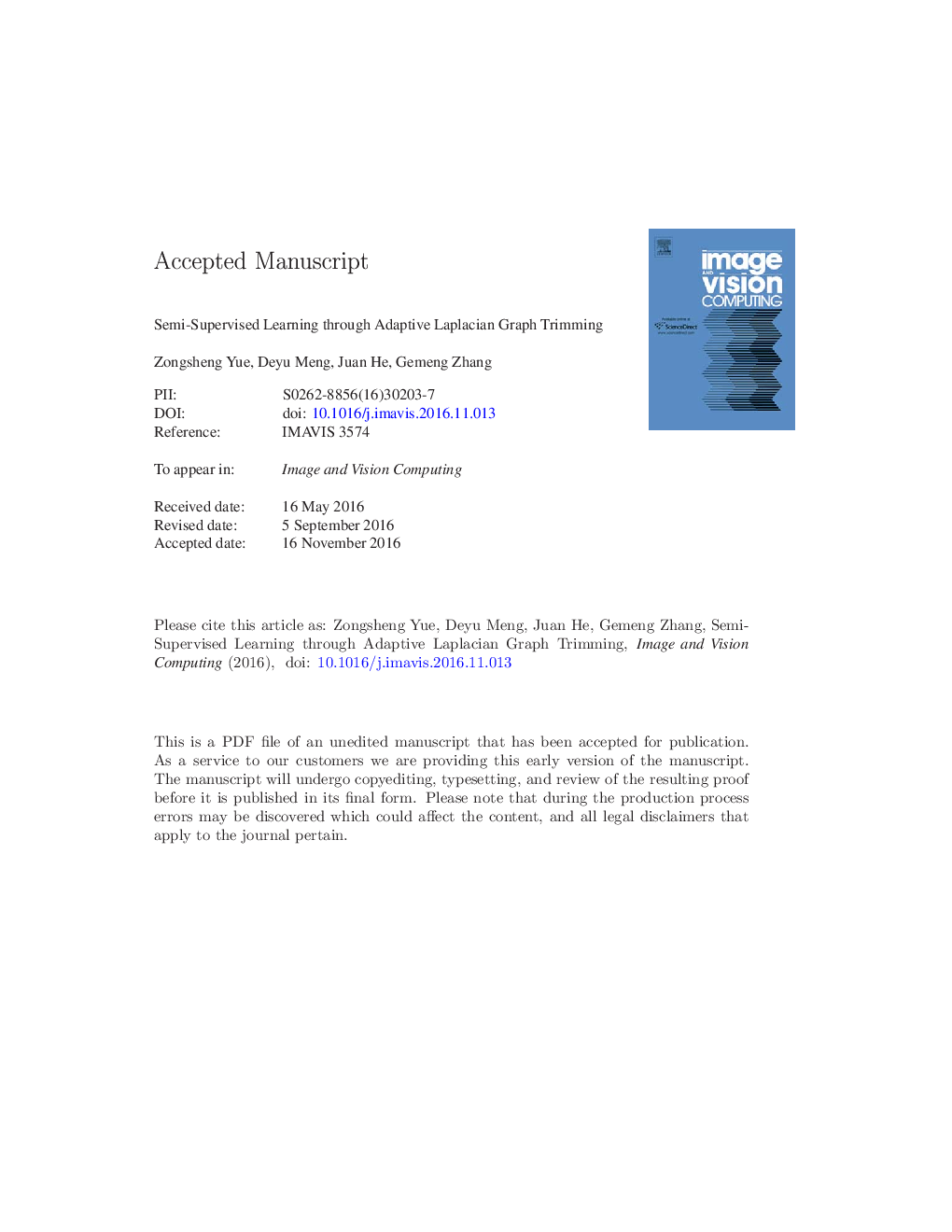| Article ID | Journal | Published Year | Pages | File Type |
|---|---|---|---|---|
| 4968918 | Image and Vision Computing | 2017 | 23 Pages |
Abstract
Graph-based semi-supervised learning (GSSL) attracts considerable attention in recent years. The performance of a general GSSL method relies on the quality of Laplacian weighted graph (LWR) composed of the similarity imposed on input examples. A key for constructing an effective LWR is on the proper selection of the neighborhood size K or ε on the construction of KNN graph or ε-neighbor graph on training samples, which constitutes the fundamental elements in LWR. Specifically, too large K or ε will result in “shortcut” phenomenon while too small ones cannot guarantee to represent a complete manifold structure underlying data. To this issue, this study attempts to propose a method, called adaptive Laplacian graph trimming (ALGT), to make an automatic tuning to cut improper inter-cluster shortcut edges while enhance the connection between intra-cluster samples, so as to adaptively fit a proper LWR from data. The superiority of the proposed method is substantiated by experimental results implemented on synthetic and UCI data sets.
Related Topics
Physical Sciences and Engineering
Computer Science
Computer Vision and Pattern Recognition
Authors
Zongsheng Yue, Deyu Meng, Juan He, Gemeng Zhang,
